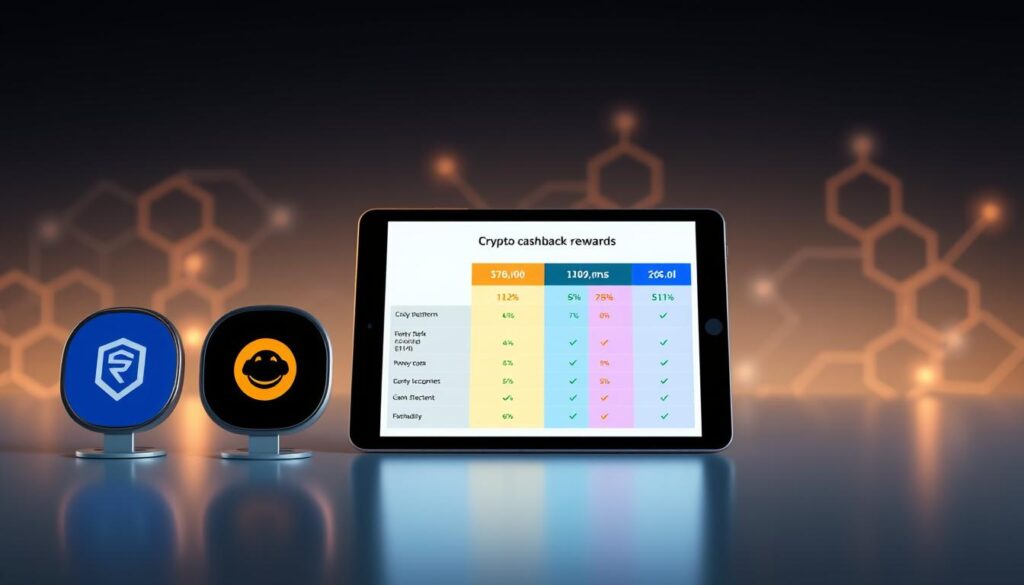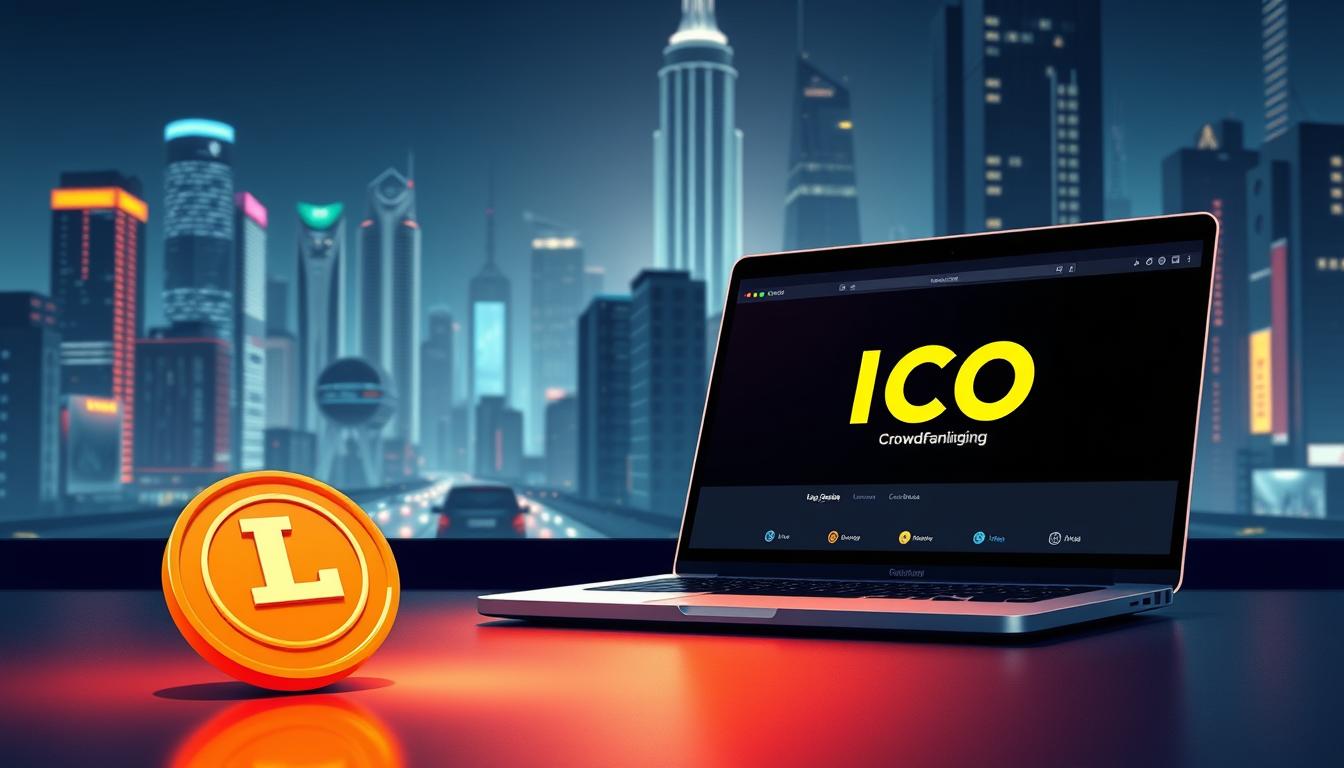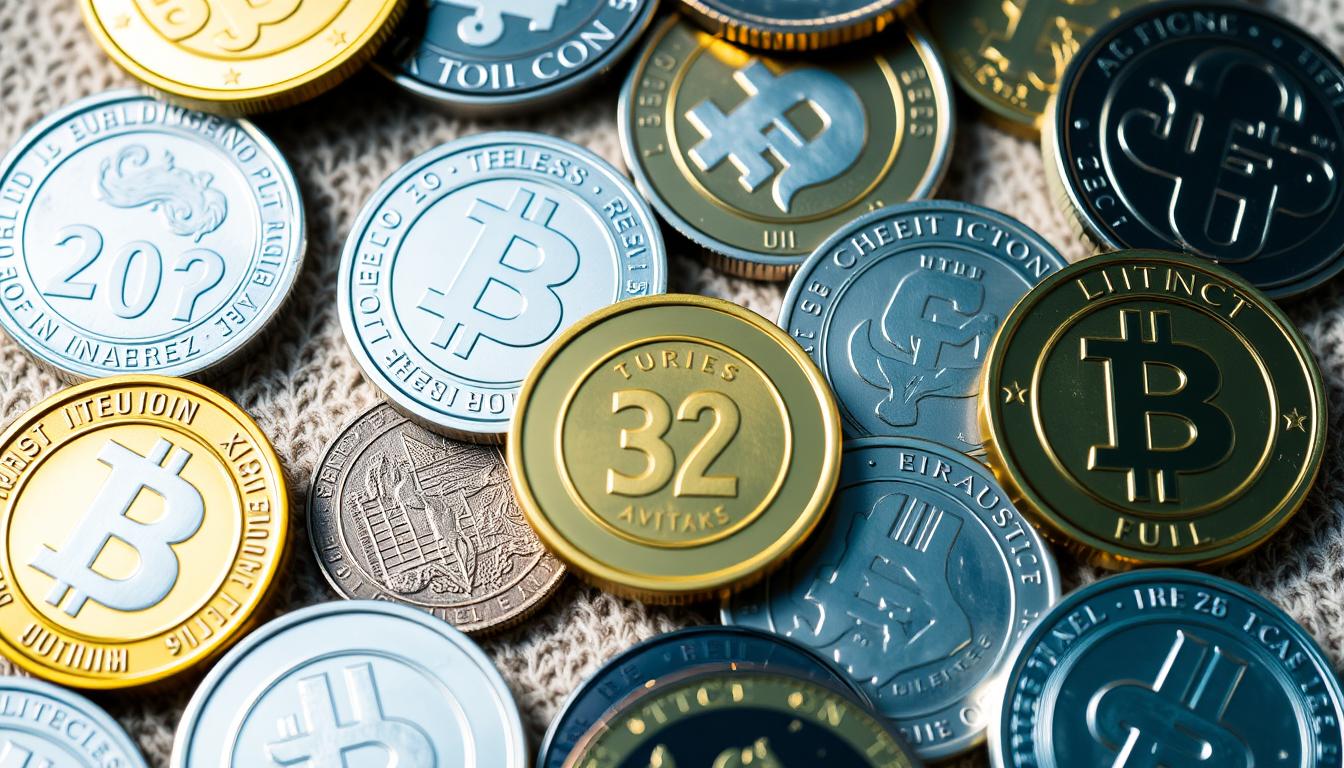Now Reading: Discover the World of Decentralized Finance (DeFi)
- 01
Discover the World of Decentralized Finance (DeFi)
Discover the World of Decentralized Finance (DeFi)

Decentralized finance, or DeFi, is a rapidly growing sector that leverages blockchain technology and cryptocurrencies to create a more open and accessible financial system. DeFi represents a significant shift from traditional finance, offering a range of innovative financial instruments and services. At its core, DeFi is about using blockchain finance to create a more transparent and inclusive financial ecosystem.
As the financial sector continues to evolve, DeFi is poised to play an increasingly important role in shaping the future of finance. With its emphasis on decentralization, transparency, and accessibility, DeFi has the potential to democratize access to financial services and create new opportunities for individuals and businesses alike. In this guide, we will explore the world of DeFi, including its core principles, key components, and real-world applications.
What is Decentralized Finance (DeFi) and Why It Matters
Decentralized finance, or DeFi, has emerged as a revolutionary concept in the financial world, transforming the way we think about money and financial transactions. At its core, DeFi is about creating a financial system that is open, accessible, and transparent, using blockchain technology and smart contracts to facilitate peer-to-peer lending and other financial services.
The evolution of traditional finance to DeFi has been driven by the need for greater efficiency, security, and inclusivity. Traditional financial systems have been criticized for being centralized, opaque, and exclusive, limiting access to financial services for many individuals and communities. DeFi, on the other hand, offers a decentralized approach, using decentralized applications and smart contracts to create a more level playing field.
The Evolution of Traditional Finance to DeFi
The transition from traditional finance to DeFi has been shaped by advances in technology, changes in consumer behavior, and the need for greater financial inclusion. Some key factors driving this evolution include:
- Advances in blockchain technology and smart contracts
- Growing demand for decentralized and transparent financial services
- Increasing adoption of digital currencies and decentralized applications
Core Principles of Decentralized Finance
DeFi is built on a set of core principles that prioritize decentralization, transparency, and accessibility. These principles include:
- Decentralized governance and decision-making
- Transparent and open-source code
- Accessible and inclusive financial services
The Role of Blockchain Technology in DeFi
Blockchain technology plays a critical role in DeFi, enabling the creation of decentralized and transparent financial systems. By using blockchain technology and smart contracts, DeFi platforms can facilitate peer-to-peer lending, decentralized exchanges, and other financial services, promoting greater efficiency, security, and inclusivity.
Understanding the DeFi Ecosystem Components
The DeFi ecosystem is composed of various components that work together to form a comprehensive financial system. At its core, cryptocurrency plays a vital role as a medium of exchange and store of value. Other key components include lending platforms, stablecoins, and decentralized exchange protocols.
These components interact to provide a wide range of financial services, from lending and borrowing to trading and investment. For instance, decentralized exchange platforms enable users to trade cryptocurrency assets in a trustless and permissionless manner.
- Enabling the creation and trading of cryptocurrency assets
- Providing lending and borrowing services through decentralized platforms
- Facilitating the exchange of assets through decentralized exchange protocols
By understanding how these components work together, users can unlock the full potential of the DeFi ecosystem and participate in a more open and inclusive financial system.
The Technical Foundation of DeFi Projects
Decentralized finance (DeFi) projects rely on a robust technical foundation to operate securely and efficiently. This foundation is built on blockchain finance principles, which enable the creation of decentralized, trustless systems. One key aspect of this foundation is tokenization, which allows for the representation of assets on a blockchain.
At the heart of DeFi projects are smart contracts, which are self-executing contracts with the terms of the agreement written directly into lines of code. These contracts are deployed on a blockchain and can automate various processes, such as the transfer of assets.
Smart Contracts Explained
Smart contracts are a crucial component of DeFi projects, as they enable the creation of decentralized applications (dApps) that can operate autonomously. These contracts can be used to facilitate a wide range of activities, from lending and borrowing to trading and investing.
Blockchain Protocols in DeFi
Blockchain protocols, such as Ethereum and Binance Smart Chain, provide the underlying infrastructure for DeFi projects. These protocols enable the creation of decentralized networks, where nodes can validate transactions and ensure the integrity of the blockchain.
Token Standards and Their Importance
Token standards, such as ERC-20 and BEP-20, play a critical role in ensuring the interoperability and security of DeFi projects. These standards define the rules and guidelines for the creation and management of tokens, which are essential for the smooth operation of DeFi applications.

| Token Standard | Description |
|---|---|
| ERC-20 | A widely-used token standard on the Ethereum blockchain |
| BEP-20 | A token standard on the Binance Smart Chain |
Getting Started with DeFi Applications
To begin exploring the world of decentralized finance, it’s essential to understand the basics of decentralized applications and how they utilize digital assets. DeFi platforms, such as those built on Ethereum, offer a wide range of financial services, from lending and borrowing to trading and earning rewards. For beginners, it’s crucial to start by setting up a digital wallet, which will serve as the primary interface for interacting with DeFi protocols.
A great resource for learning about DeFi is the guide to DeFi platforms for beginners, which provides an in-depth overview of the ecosystem and its various components. When choosing a DeFi platform, consider factors such as security features, user experience, and costs to find the best fit for your financial goals.
Some key considerations for getting started with DeFi applications include:
- Understanding the different types of digital assets and their use cases
- Researching and selecting a reputable DeFi platform
- Setting up a secure digital wallet and managing private keys
- Staying informed about market trends and regulatory developments
By following these steps and staying informed, individuals can begin to navigate the world of DeFi and start leveraging decentralized applications to manage their digital assets. As the DeFi ecosystem continues to evolve, it’s essential to remain adaptable and open to new opportunities and challenges.
Exploring DeFi Lending and Borrowing Platforms
DeFi lending and borrowing platforms have gained popularity in recent years, offering a peer-to-peer lending model that allows individuals to lend and borrow cryptocurrency without the need for traditional financial institutions. This model has opened up new opportunities for investors and borrowers alike, providing a more transparent and efficient way to manage cryptocurrency assets.
The use of cryptocurrency in DeFi lending has enabled faster and more secure transactions, reducing the risk of counterparty default. With the rise of DeFi lending, investors can now earn interest on their cryptocurrency holdings, while borrowers can access capital without the need for traditional credit checks.
How DeFi Lending Works
DeFi lending platforms use smart contracts to facilitate lending and borrowing. These contracts are programmed to automatically execute when certain conditions are met, ensuring that transactions are secure and transparent. Investors can lend their cryptocurrency to borrowers, earning interest on their investment.
Popular Lending Platforms
Some popular DeFi lending platforms include:
- Aave
- Compound
- MakerDAO
These platforms offer a range of lending options, including fixed-rate and variable-rate loans, as well as the ability to borrow against collateralized assets.
Understanding Interest Rates and Yields
Interest rates and yields on DeFi lending platforms vary depending on the platform, the type of loan, and market conditions. Investors can earn yields ranging from 5-20% per annum, depending on the platform and the type of loan. The following table compares the interest rates and yields on popular DeFi lending platforms:
| Platform | Interest Rate | Yield |
|---|---|---|
| Aave | 5-10% | 10-15% |
| Compound | 4-8% | 8-12% |
| MakerDAO | 6-12% | 12-18% |
By understanding how DeFi lending works and the options available, investors and borrowers can make informed decisions about their cryptocurrency assets, taking advantage of the benefits offered by peer-to-peer lending in the DeFi space.
Decentralized Exchanges (DEX) and Trading
Decentralized exchanges, or DEXs, are a crucial component of the DeFi ecosystem, enabling users to trade cryptocurrencies in a trustless and permissionless manner. The decentralized exchange model allows for peer-to-peer transactions, eliminating the need for intermediaries and enhancing the overall security of the trading process.
A key aspect of DEXs is tokenization, which enables the creation of new tokens representing various assets, such as cryptocurrencies, commodities, or even traditional securities. This has opened up new opportunities for trading and investment, as users can now access a wide range of assets on a single platform.
Some of the advantages of DEXs include:
- Increased security and transparency
- Lower fees compared to traditional exchanges
- Greater control over assets and transactions
As the DeFi space continues to evolve, decentralized exchange platforms are likely to play an increasingly important role in shaping the future of trading and investment. With their emphasis on tokenization and decentralized governance, these platforms are well-positioned to drive innovation and growth in the financial sector.
Yield Farming and Liquidity Mining Strategies
Yield farming and liquidity mining are popular strategies in the blockchain finance space, allowing users to earn rewards by providing liquidity to decentralized platforms. These strategies involve lending digital assets to protocols, which then use them to facilitate trades, loans, and other financial activities.
To get started with yield farming and liquidity mining, it’s essential to understand the underlying mechanics and risks involved. This includes researching the protocols, understanding the reward structures, and being aware of the potential risks, such as smart contract vulnerabilities and market volatility.
- Compound
- Aave
- Uniswap
These protocols offer various reward structures, such as interest rates, tokens, and other incentives, to attract liquidity providers and facilitate the growth of thedigital assetsmarket.
By participating in yield farming and liquidity mining, users can earn significant rewards, but it’s crucial to approach these strategies with caution and thoroughly understand the risks involved. As the blockchain finance space continues to evolve, it’s essential to stay informed and adapt to the changing landscape to maximize returns and minimize risks.
| Protocol | Reward Structure | Risk Level |
|---|---|---|
| Compound | Interest rates, tokens | Medium |
| Aave | Interest rates, tokens | Medium |
| Uniswap | Tokens, liquidity mining rewards | High |
DeFi Wallets and Security Best Practices
When it comes to decentralized finance, security is of utmost importance. With the rise of cryptocurrency, it’s essential to have a secure wallet to store your digital assets. There are various types of wallets available, including software, hardware, and paper wallets. Each type has its own set of advantages and disadvantages, and it’s crucial to choose the right one to protect your assets.
A good wallet should have robust security measures, such as two-factor authentication, multi-signature wallets, and encryption. It’s also essential to keep your wallet software up to date and to use a reputable wallet provider. Some popular wallet options include MetaMask, Ledger, and Trezor.
In addition to choosing a secure wallet, it’s also important to follow best practices, such as:
- Using strong, unique passwords
- Enabling two-factor authentication
- Regularly backing up your wallet
- Being cautious of phishing scams
By following these best practices and using a secure wallet, you can protect your digital assets and enjoy the benefits ofdecentralized financeandcryptocurrency.
Stablecoins in the DeFi Ecosystem
Stablecoins play a crucial role in the decentralized finance ecosystem, providing a stable store of value and medium of exchange in the volatile world of cryptocurrencies. In the context of blockchain finance, stablecoins help to mitigate the risks associated with price fluctuations, allowing users to transact and invest with greater confidence.
There are several types of stablecoins, including fiat-collateralized, crypto-collateralized, and algorithmic stablecoins. Each type has its own unique characteristics and use cases, and they all contribute to the growth and development of the decentralized finance ecosystem.
Some of the key use cases for stablecoins include:
- Payment settlements
- Lending and borrowing
- Trading and investing
As the blockchain finance sector continues to evolve, stablecoins are likely to play an increasingly important role in facilitating transactions and investments. However, it is essential to consider the potential risks and challenges associated with stablecoins, such as regulatory uncertainty and market volatility.

By understanding the different types of stablecoins and their use cases, users can make informed decisions about how to utilize these assets in the decentralized finance ecosystem. As the demand for stablecoins continues to grow, it is likely that we will see further innovation and development in this area, leading to new opportunities for users and investors alike.
| Stablecoin Type | Description |
|---|---|
| Fiat-collateralized | Backed by fiat currency reserves |
| Crypto-collateralized | Backed by other cryptocurrencies |
| Algorithmic | Uses algorithms to maintain stability |
Understanding DeFi Risks and Challenges
The world of decentralized finance (DeFi) is rapidly evolving, with new platforms and applications emerging every day. However, this growth is not without its risks and challenges. One of the primary concerns is the volatility of the cryptocurrency market, which can result in significant losses for investors.
Another challenge facing DeFi is the lack of regulatory clarity, which can make it difficult for platforms to operate within established guidelines. This uncertainty can also make it challenging for investors to navigate the space, particularly when it comes to decentralized exchange platforms.
Some of the key risks and challenges associated with DeFi include:
- Market volatility
- Regulatory uncertainty
- Security risks
- Lack of transparency
Despite these challenges, many experts believe that DeFi has the potential to revolutionize the way we think about finance. By providing a decentralized and open alternative to traditional financial systems, DeFi platforms can increase accessibility and reduce costs for users.
As the DeFi space continues to evolve, it is essential to address these risks and challenges head-on. By doing so, we can create a more stable and secure environment for investors and users, and unlock the full potential of cryptocurrency and decentralized exchange platforms.
| Risk | Description |
|---|---|
| Market Volatility | The value of cryptocurrencies can fluctuate rapidly, resulting in significant losses for investors. |
| Regulatory Uncertainty | The lack of clear regulations can make it difficult for DeFi platforms to operate and for investors to navigate the space. |
| Security Risks | DeFi platforms can be vulnerable to hacking and other security threats, which can result in the loss of funds. |
DeFi Governance and Token Economics
Decentralized finance (DeFi) projects rely on effective governance models to ensure the decentralized nature of the ecosystem. Blockchain finance plays a crucial role in this, enabling the creation of governance tokens that give holders voting rights. This allows the community to participate in decision-making processes, such as proposing and voting on changes to the protocol.
The use of tokenization in DeFi governance enables the creation of a decentralized and transparent decision-making process. This is essential for building trust and confidence in the ecosystem.
Governance Token Mechanics
Governance tokens are designed to incentivize participation in the decision-making process. Token holders can propose changes to the protocol, vote on proposals, and participate in discussions.
Voting Systems and Proposals
Voting systems in DeFi governance typically involve a proposal and voting process. Proposals can be submitted by token holders, and then voted on by the community. This ensures that decisions are made in a decentralized and transparent manner.
Community Participation
Community participation is essential for the success of DeFi governance models. Token holders must be actively engaged in the decision-making process, proposing and voting on changes to the protocol. This helps to build a strong and resilient ecosystem.
Advanced DeFi Strategies and Tools
For experienced users, decentralized applications offer a range of advanced strategies and tools to manage digital assets. These include leverage and margin trading, options and futures contracts, and other sophisticated investment strategies available in the DeFi space.
Some key strategies include:
- Leverage and margin trading to amplify potential gains
- Options and futures contracts for hedging and speculation
- Yield farming and liquidity mining to generate passive income
When using these advanced strategies, it’s essential to understand the associated risks and rewards. Decentralized applications provide the tools, but users must do their own research and make informed decisions about their digital assets.

By mastering these advanced DeFi strategies and tools, users can take their digital assets management to the next level and achieve their financial goals in the DeFi ecosystem.
Regulatory Landscape and Compliance
The decentralized finance (DeFi) space is rapidly evolving, and regulatory bodies are taking notice. As DeFi continues to grow, it’s essential to understand the current regulatory landscape and compliance requirements. DeFi operates on blockchain finance principles, which can make it challenging for regulators to keep up.
Regulatory bodies are working to create frameworks that balance innovation with investor protection. Decentralized finance platforms must comply with existing regulations, such as anti-money laundering (AML) and know-your-customer (KYC) laws. Failure to comply can result in severe penalties, damaging the reputation of DeFi platforms and undermining trust in the industry.
Current Regulatory Status
Currently, regulatory bodies are taking a closer look at DeFi platforms, particularly those offering lending and borrowing services. Blockchain finance companies must navigate complex regulatory requirements, ensuring they comply with securities laws and other financial regulations.
Compliance Requirements
To ensure compliance, DeFi platforms must implement robust AML and KYC procedures. This includes verifying user identities, monitoring transactions, and reporting suspicious activity. By prioritizing compliance, DeFi platforms can mitigate risks and build trust with users and regulatory bodies.
Future Regulatory Considerations
As the DeFi space continues to evolve, regulatory bodies will likely introduce new guidelines and regulations. DeFi platforms must stay ahead of the curve, adapting to changing regulatory requirements and ensuring they remain compliant. By doing so, they can foster a positive and innovative environment for decentralized finance and blockchain finance to thrive.
Real-World Applications and Use Cases
Decentralized finance (DeFi) is moving beyond theoretical concepts to practical, everyday uses. One of the key areas where DeFi is making an impact is in the cryptocurrency market, where it enables the creation of decentralized exchanges. A decentralized exchange is a platform that allows users to trade cryptocurrencies without the need for intermediaries.
Some real-world applications and use cases of DeFi include:
- Payment systems: DeFi enables the creation of decentralized payment systems that allow for fast and secure transactions.
- Lending: DeFi platforms provide lending services that allow users to borrow and lend cryptocurrencies in a decentralized manner.
- Insurance: DeFi platforms offer insurance services that provide protection against risks such as smart contract failures.
These applications and use cases demonstrate the potential of DeFi to transform the financial industry. As the use of cryptocurrency and decentralized exchange platforms continues to grow, we can expect to see even more innovative applications and use cases emerge.
Shaping the Future of Finance Through DeFi Innovation
As the decentralized finance (DeFi) ecosystem continues to evolve, it holds immense potential to transform the traditional financial landscape. DeFi’s core principles of transparency, accessibility, and user empowerment are set to redefine how we interact with and access financial services. With the underlying blockchain finance technology enabling secure, peer-to-peer transactions, the future of DeFi promises a more inclusive and efficient financial system for all.
Innovations in peer-to-peer lending, decentralized exchanges, and automated market makers are paving the way for a democratized financial ecosystem. As DeFi protocols become more sophisticated and user-friendly, the barriers to entry will continue to lower, allowing greater participation from individuals and businesses previously excluded from traditional finance. This democratization of finance holds the promise of financial inclusion and empowerment for the unbanked and underserved communities worldwide.
Looking ahead, the integration of DeFi with real-world assets and industries will further solidify its position as a powerful financial innovation. As regulators collaborate with the DeFi community to establish appropriate frameworks, the sector is poised to achieve greater mainstream adoption and integration with traditional finance. The future of finance is undoubtedly decentralized, and the pioneering efforts of the DeFi ecosystem will shape a more transparent, accessible, and equitable financial landscape for generations to come.
FAQ
What is Decentralized Finance (DeFi)?
Decentralized Finance (DeFi) is a financial system that operates on blockchain technology, offering a more transparent, accessible, and inclusive alternative to traditional finance. DeFi utilizes cryptocurrencies, smart contracts, and decentralized applications (dApps) to facilitate a wide range of financial services, including lending, borrowing, trading, and asset management, without the need for intermediaries.
How does DeFi differ from traditional finance?
The key differences between DeFi and traditional finance lie in the principles of decentralization, transparency, and accessibility. DeFi operates on a peer-to-peer model, eliminating the need for centralized authorities or institutions to control and manage financial transactions. This allows for greater transparency, as all transactions are recorded on the blockchain for public view, and increased accessibility, as anyone with an internet connection can participate in DeFi protocols.
What are the core components of the DeFi ecosystem?
The DeFi ecosystem is composed of several key components, including cryptocurrencies, decentralized exchanges (DEXs), lending and borrowing platforms, stablecoins, and decentralized applications (dApps). These components work together to create a comprehensive financial system that operates independently of traditional financial institutions.
How do smart contracts enable DeFi?
Smart contracts are self-executing, programmable agreements that form the backbone of DeFi. These contracts are deployed on blockchain networks and automatically enforce the terms of an agreement without the need for intermediaries. Smart contracts are used to facilitate DeFi transactions, such as lending, borrowing, and trading, ensuring the efficient and secure execution of financial activities.
What are the benefits of using DeFi applications?
The key benefits of using DeFi applications include increased accessibility to financial services, greater transparency and control over one’s assets, the ability to earn passive income through yield farming and lending, and the potential for higher returns compared to traditional finance. DeFi also offers the opportunity for global, permissionless financial transactions that are not subject to the same regulatory constraints as traditional finance.
What are the risks and challenges associated with DeFi?
While DeFi offers numerous benefits, it also comes with its own set of risks and challenges. These include market volatility, smart contract vulnerabilities, regulatory uncertainty, and the potential for users to lose their funds due to human error or technical issues. It is crucial for DeFi users to understand these risks and take appropriate security measures to protect their digital assets.
How can I get started with DeFi?
To get started with DeFi, you will need to set up a digital wallet that is compatible with DeFi protocols, such as MetaMask or Trust Wallet. Once your wallet is set up, you can begin interacting with various DeFi applications, such as decentralized exchanges, lending platforms, and yield farming protocols. It is important to thoroughly research and understand the risks involved before engaging with DeFi applications.
What is the role of governance tokens in DeFi?
Governance tokens are a crucial component of DeFi, as they provide users with a means to participate in the decision-making processes of DeFi protocols. Holders of governance tokens can vote on proposals, influence protocol upgrades, and have a say in the future direction of the project. This decentralized governance model is a key principle of DeFi, allowing for community-driven development and decision-making.
How can DeFi impact the future of finance?
DeFi has the potential to revolutionize the financial industry by creating a more inclusive, transparent, and efficient financial system. By leveraging blockchain technology and decentralized protocols, DeFi can provide access to financial services for the unbanked and underbanked populations, democratize investment opportunities, and reduce the reliance on traditional financial intermediaries. As DeFi continues to evolve and gain mainstream adoption, it could significantly impact the future of finance, leading to a more equitable and accessible financial landscape.















